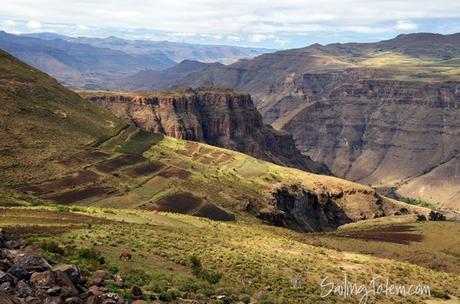
Road tripping from our landfall in South Africa, there was time to loop out and see at least one other country. We decided to include the kingdom of Lesotho on our route: partly because it came well recommended (thanks to everyone who chimed in!), partly because the frosty mountains seemed as different as we could possibly get from the sea-level tropics we’ve been in for so long.
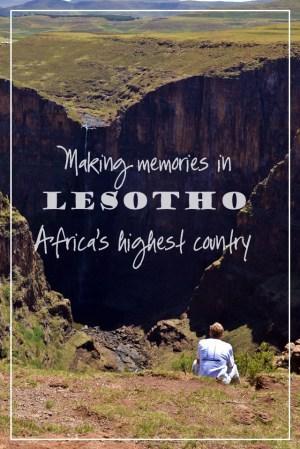
We had to get a special letter (at no small cost) from the rental car agency that would allow the vehicle to cross international borders. We had to make sure we had original birth certificates for all three kids on board. We added a couple of thousand kilometers of sometimes white-knuckle driving to our rental car’s odometer. Why is Lesotho worth the extra effort? The drama, the beauty, and the chance to experience a rich culture.
Truly, it’s stunning. The lowest point of land in Lesotho is over 1,000 meters (it’s actually 4,593 feet), making it officially the highest country on earth. And despite starting at high altitude, not for a minute could we forget we were in mountain country. Massive gorges opened up like green-tinted carbons of our Grand Canyon.
About the size of the state of Maryland, Lesotho is completely surrounded by South Africa. The borders are drawn, as one person put it, “where the arable land ends.” In this harsh landscape, paved roads have made slow progress- hastened in recent years by Chinese mining interests.
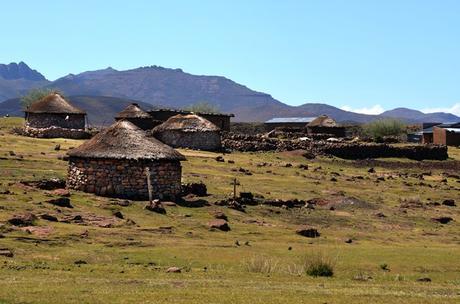
Traditional round houses, mokhoro, dot the landscape, their pointed thatch rooftops poking over ridges. Every now and then we’d spot a solar panel, but most people light candles to see at night, and burn cow dung to keep warm. It was refreshing to leave behind the land of fences- almost all property in South Africa is bordered by a fence topped by razor wire. Here, about the only fences were low stone walls to contain cows, donkeys, sheep or horses at night.
We didn’t have to drive far to identify the unique Basotho triumverate of hat, blanket, and stick that so many people carry with them.
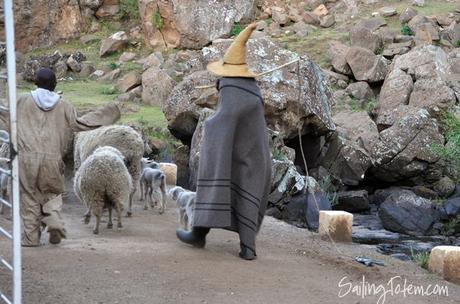
The blankets are for warmth, straw hats (shaped like a mountain connected to the founder of Lesotho’s national identity, 19th century King Moshoeshoe I) protect from high-altitude sun; the stick is alternately for herding sheep, driving a donkey, or just walking.
Perhaps because it has been relatively disconnected, people were disarmingly friendly. Pedestrians are more common on the two-lane roads than cars (and both were vastly outnumbered by livestock); as we slowly drove the hairpin curves of the main road to our lodge, groups of children and shepherds alike would call and wave. There wasn’t time to learn much Sotho, but a smile and “lumela!” to anyone I encountered always seemed to elicit a grin and a returned greeting.
We stayed at Semonkong Lodge: a central location, located three hours driving from the border in opposite directions. That made it convenient, but the ability to experience Basotho culture made it perfect. A single mokhoro at Semonkong lodge was just the right size for our family: Mairen lit our evening fire in a tidy fireplace.
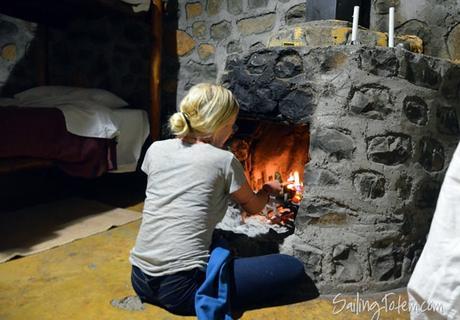
The kids were most excited about the chance to go horseback riding (in truth, I was too) at the lodge. In Lesotho, horses are the dominant mode of transportation; they rule the road and have right of way. Incredibly, none of us were terribly sore after a long morning of looping around the surrounding hills.
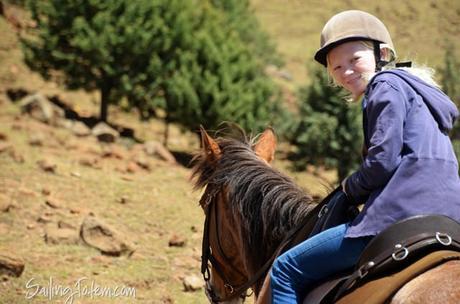
My favorite moment on the ride was probably when we rested by a river for the horses to drink, and mine decided to go belly deep, which cracked up a nearby shepherd so much he nearly fell in himself.
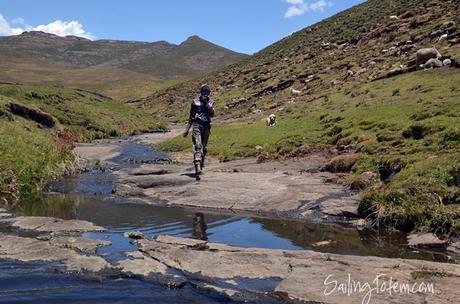
In town, there aren’t cars parked outside the stores, but horses tied while their owners take care of business.
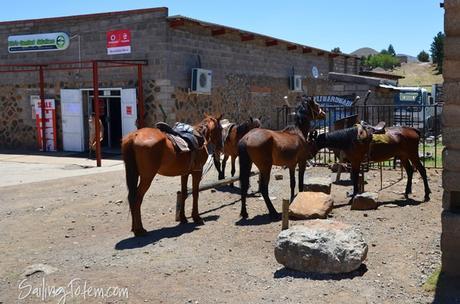
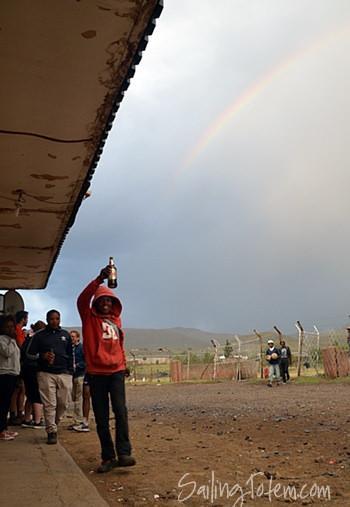
The guides we hired through the lodge were our best way-finders for cultural knowledge and experiences. Patiently answering many questions, open to the sometimes personal ones, welcoming our interest in learning about their country and genuinely concerned that we were enjoying ourselves. Hiring guides here made our short time more intesnively informationmal. It helped us put money into the local economy. And it was just plain FUN! Would I have learned about a Sotho musician and danced in a one-room tavern otherwise? I certainly wouldn’t have known that a white flag outside a house means that inside you can buy home-brewed sorghum beer, yellow flags signify ginger beer is available, and a red flag is up for meat. It was fun to pass of the camera for someone else to get a picture now and then, too.
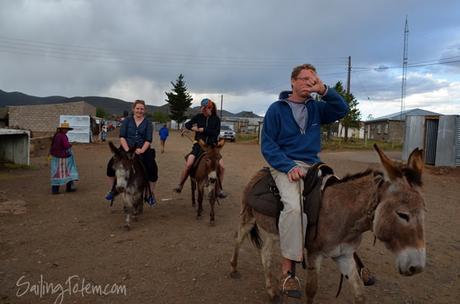
Because pub crawling by DONKEY is so much more fun!
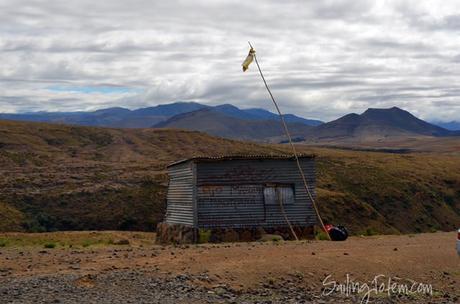
Ginger beer (alcoholic) for sale here.
A cultural guide also helped us understand the significants of Besotho blankets, which have deep meaning in Lesotho. More than just protection from the elements, blankets are an integral part of life. Gifted at marriage, for birth, at death; they’re worn differently by men and women, and each of the limited patterns they’re made in comes with a story.
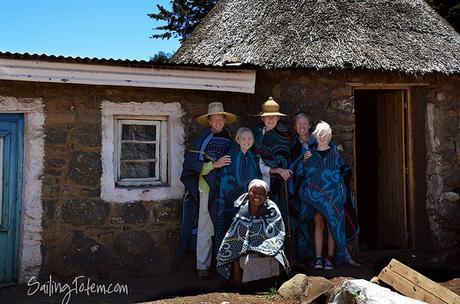
We had to buy one, of course, and it’s beautiful: 90% wool (just the warp yarns are cotton), a pattern with the maize we saw growing everywhere, one used in blankets given at marriage in particular. A beautiful souvnir (they have to have a function, or it’s hard to find room on Totem!) and the perfect cap to more than three weeks of inland travel in southern Africa.
This post is syndicated on Sailfeed.

